Content warning: sexually suggestive material
Songs to read to:
Zapp (featuring Shirley Murdock and Charlie Wilson), “Computer Love,” track 2 on The New Zapp IV U, Warner Bros. Records, 1985.
Doja Cat, “Cyber Sex,” track 1 on Hot Pink, Kemosabe and RCA Records, 2019.
Introduction
It is one hundred years ago. Or it is one hundred years from now. You are watching a silent porn flick—The Surprise of a Knight, directed by Oscar Wild (an obvious pseudonym). A title card tells you this is a “picture told in action and not words.” In the first shot, a white femme primps and preens in her boudoir. Through a series of jump cuts, you watch as she plays with her hair, adjusts her bosom, and gazes into a hand mirror. She proceeds to lift her skirts, revealing she is without underwear. She brushes off her mons.
Enter the titular knight—a white masc in a suit. He emerges from behind a curtained entryway and greets the protagonist with a knowing smile. He pauses and turns to gaze at you through the screen; then they both do, acknowledging the presence of their voyeur. They resume their greetings as if nothing has happened and exchange kisses. After drinking and making out, the knight gets handsy. The protagonist shoos him away in a dramatic huff, wagging her finger, and stifling breathless laughter with a knowing grin. They dance in the boudoir.
In one scene, the protagonist fellates the knight, though his pants remain on. In another, the knight gropes at the protagonist’s chest over her dress, and rubs at her groin. The couple proceeds to either frot, have intercrural or penetrative sex—it remains vague. But the knight keeps his boxers on, while the protagonist’s lower half is exposed. They pause, and the protagonist wriggles her behind playfully as the knight sits to the side, attempting to hide a fit of giggles by turning his face away from the screen. After the fun has ended, the knight disappears, and you are left to gaze at the protagonist standing alone in her boudoir once again. This time, when she lifts her dress, a title card announces “surprise” in capital letters. She spreads her legs to reveal a penis, and swivels her hips dramatically as if to emphasize its presence.
After messily grabbing at the layers of her skirt and dancing half-naked by herself, the knight reappears to help the protagonist strip. After shedding these trappings of femininity—her gown and bra—the protagonist impatiently waves off the filmmaker, director, and perhaps even you, the viewer. Smiling and clumsily pulling off a stocking, she mugs for the camera, making a silly hand gesture. The last shot is a close-up of another white masc in a suit—the protagonist, gazing at you, smiling and laughing one last time.
Imbuing Historicity
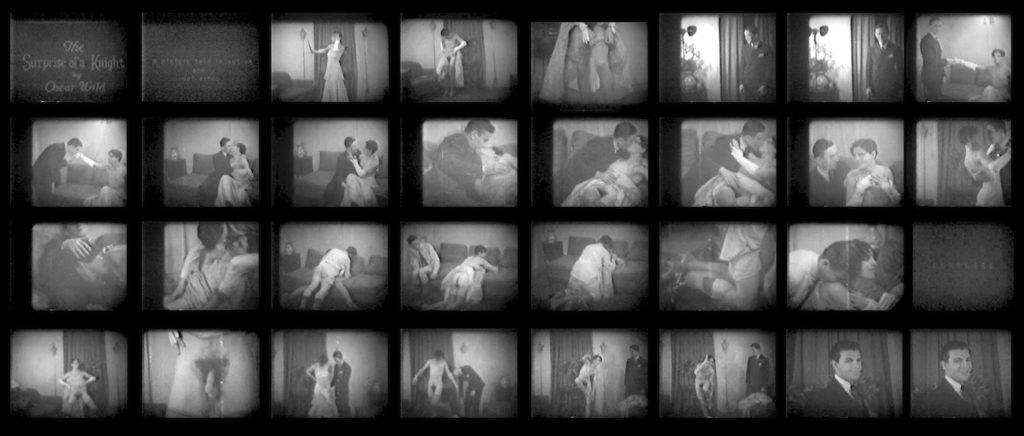
Surprise is a silent stag film—a blanket term now used to describe any short porn flicks produced during the early twentieth century amid strict censorship laws. Created around 1929, it is the earliest extant American film to depict trans-queer sex. It is held at the Kinsey Institute without provenance—its acquisition mysteriously attributed to an anonymous donor. Sequestered away in the collections and low-quality digital copies only made available to scholars by appointment, Surprise’s information-rich content belies its lack of accessibility (both physically and contextually). Who produced the film and for whom was it produced—how, where, and why?
The issues made evident by Surprise allow us to explore interpretative methodologies for media arts and archaeology—those we may adapt to critically read similar materials within a broader history of pleasure politics and trans-queer experiences. The film’s amateur production and vernacular style allow for the excavation trans-queer memory and meaning-making. Drawing on Michel-Rolph Trouillot’s idea of historicity 1 and 2—what happened and what is said to have happened*—we recognize media as both historical and mythical, liminal and folkloric in quality:
You can call … queer porn research! … It is pornography made by queers, for queers … Many of the videos are documentaries, as they capture queer sex as it happens … formal scientific studies like Kinsey’s never could. †
In other words, Surprise—an antique docuporn—acts as both a primary and secondary source. It also offers an entry point into a discussion on the gaps and silences of archives. Drawing on Saidiya Hartman’s method of critical fabulation, we recognize what we do not or cannot know and, in turn, must complicate and contest linear narratives based on select sources:
Re-presenting the sequence of events in divergent stories … to displace the received or authorized account, and to imagine what might have happened or might have been said or might have been done … by exploiting the ‘transparency of sources’ as fictions of history…‡
This may be considered a fictive method.§ Beyond that, Surprise blurs the lines between traditional historiographic categories of media and material culture. What is film absent physicality? Given a decaying canister, a missing reel, a broken projector—and the moving pictures, the content, the meanings these objects once communed—what information is lost with digitization and disposal?
Excavating Context
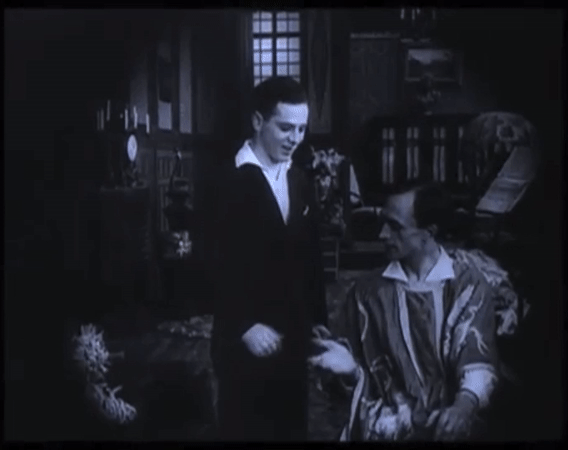
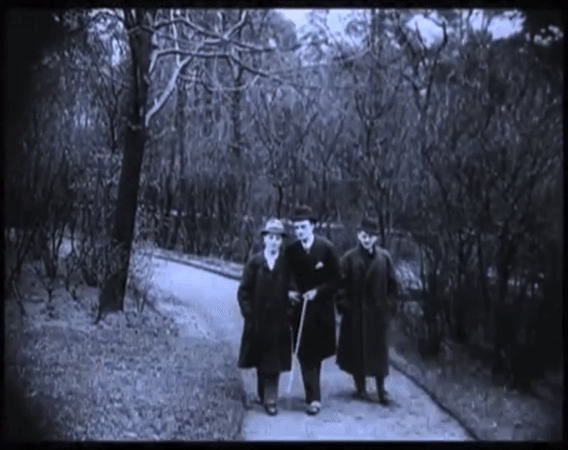
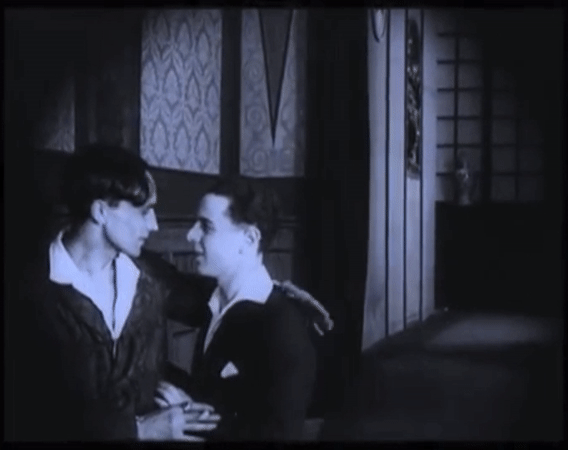
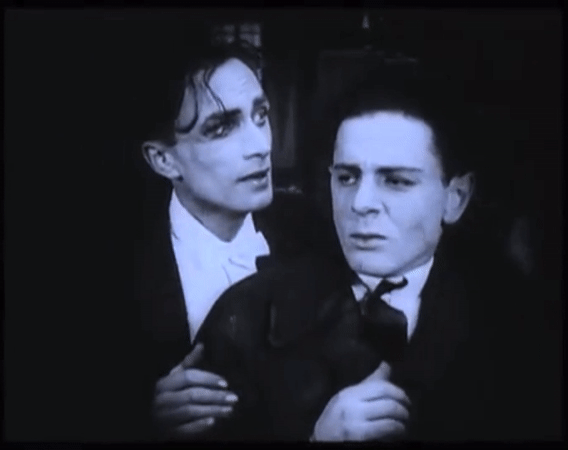
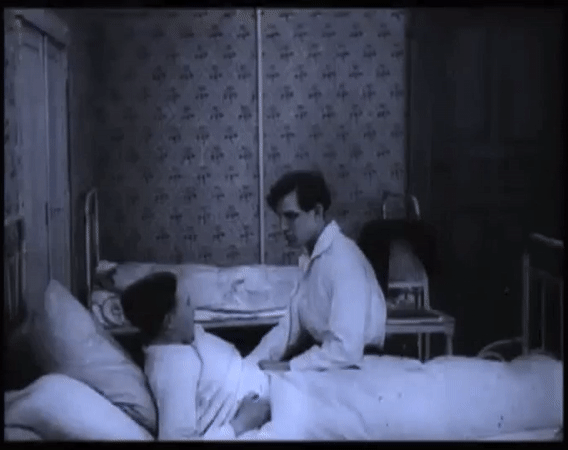
Beginning in the 1800s and continuing into the interwar period, trans-queer activists in the west gave name to their experiences using identifiers, to invoke communities with kindred desires and presentations. For trans-queer communities at the turn of the century, gender and sexuality were experienced in tandem. An attraction to men was considered an inherently feminine attribute, such that one might have a male body, but a female sex drive or psyche. Straddling modern conceptions of gay, trans, and intersex identities, they referred to themselves as urnings, inverts, fairies, third sex, and sexual intermediaries.
Hetero/homo dichotomies were different than they are today—not just based on one’s embodied sex, but on gendered presentation and sexual behavior. Among sex workers, fairies were femme, and might dress like women to entice masculine and straight clientele. Trade, as they were known, were often the active partners in these arrangements and, as such, maintained a so-called “normal” masculine identity as the non-penetrated party.
Across the pond, a decade before Surprise’s production, German sexologist Magnus Hirschfeld began producing a series of “social hygiene” films—one of which would come to be known as the first—or earliest extant—film to explicitly deal with trans-queer issues. In a campaign to decriminalize sodomy and de-stigmatize other issues of sexuality, Hirschfeld saw film as a vehicle for education and public welfare—“In the work of enlightenment that film performs so well, science has found a powerful ally in its fight for justice.”¶ In juxtaposition to depictions of trans-queer eroticism and femininity, Different from the Others (Anders als die Andern) was created in service to trans-queer respectability politics.
The two main characters are relatively masc, and their intimacy is innocently conveyed through longing gazes, gentle caresses, and hand holding. In a flashback, even a chaste schoolboy kiss is left to the imagination thanks to a discretion shot. By the end of the film, the protagonist meets an untimely demise and his young lover mourns him—while Hirschfeld preachily exhorts “through knowledge to justice!” Sexual intermediaries were treated as scientific subjects, courtesy of a Hirschfeld lecture partway through the film, but they were not depicted—except in the background of two gay bar scenes.
Hirschfeld informs the audience that “apart from man and woman, there are also men with womanly physical and psychological traits,” while displaying photographs of nude crossdressers. The discussion is highly clinical, almost taxonomic in nature—aided by the use of media within media. Regardless, the film caught the attention of Weimar censors, with screenings shut down within months. Not too long after, the Nazis burned it, among other materials from Hirschfeld’s Institute. The film only exists as a fragment today.
Touch as Feeling, Touch as Memory
The shaping of trans-queer pasts and presents into progressive teleologies not only obscures the subjective, often nameless experiences of historical actors, but also covers over complex affective registers. As such, I argue that pornography lends itself well to trans-queer history’s “archive of feeling.”# In lieu of turn-of-the-century activist treatises and medical ethnographies, Surprise is a silent, visual memoir created by, for, and about trans-queer people. It offers an intimate glimpse into the lives of two trans-queer people, even as characters in a dramatic roleplay. While likely created for public consumption, it does not seek a broad audience, nor does it seek to convince us of anything. The film exists in anonymity, much like its creators. Surprise allows trans-queers to be ridiculous and unexceptional—and find pleasure in each other’s company.
So, how can we locate pleasure in a trans-queer “archive of feeling” now—in the Digital Age, no less? Pleasure has always been facilitated by the technologies and media that sex workers—especially trans-queers and femmes of color—helped create. Yet these same technologies and media are continually regulated and censored to exclude them.** Meanwhile, Surprise has been produced and re-produced via rickety projectors, glitchy camcorders, scratched CD-ROMs, broken MP4 links, and laggy GIFs. In the absence of touch and taste and scent and sound and (for the most part) text—this narrative of images has been transported to the present, albeit grainy and colorless.
Maybe what’s most surprising about Surprise is the possibility of trans-queer joy in an age of isolation—then and now—tangible in its intimacy. It is a gift to the future—media that allows us to experience trans-queer pleasure by proxy, from our screens and our makeshift theaters, just as it was one hundred years ago. It is a palimpsest of trans-queer memory and meaning-making. The performers invite spectatorship. They seek to share their desires “through action and not words,” as promised in the first of the only two intertitles. It remains a motion picture manifesto—an unapologetic expression and declaration of sexuality, selfhood, and trans-queer identity. The raunchy medium is selected and fashioned with intent—touch as memory, and a statement—I am here and beautiful and rapturous.
- *Michel-Rolph Trouillot, Silencing the Past: Power and the Production of History (Boston: Beacon Press, 1995), 29.
- †Courtney Trouble, “Queer Porn Archive” (MFA thesis exhibition, California College of the Arts, 2017), http://courtneytrouble.com/queer-porn-archive.
- ‡Saidiya Hartman, “Venus in Two Acts,” Small Axe 12 (2008): 11.
- §Taking fictive to mean imagined or crafted; reminiscent of “fictive kinship,” an anthropological term for chosen family.
- ¶Anders als die Andern, directed by Richard Oswald (Berlin: Richard Oswald-Film, 1919).
- #Ina Linge, “Sexology, Popular Science and Queer History in Anders als die Andern (Different from the Others),” Gender & History 30 (2018): 604-606; Ann Cvetkovich, An Archive of Feelings: Trauma, Sexuality, and Lesbian Public Cultures (Durham: Duke University Press, 2003); Heather Love, Feeling Backward: Loss and the Politics of Queer History (Cambridge: Harvard University Press, 2009).
- **Gretchen Soderlund, May Jeong, and Kate D’Adamo, “Trains, Newspapers and the Birth of the Modern American Sex Trade,” Hacking//Hustling, May 7, 2021, https://hackinghustling.org/trains-newspapers-and-the-birth-of-the-modern-american-sex-trade; Sinnamon Love, Daisy Ducati, Melissa Gira Grant, and Danielle Blunt, “Sexual Gentrification: An Internet Sex Workers Built,” Hacking//Hustling, April 6, 2021, https://hackinghustling.org/sexual-gentrification-an-internet-sex-workers-built; Chibundo Egwuatu, Yin Q, Gabriella Garcia, and Zahra Stardust, “Decoding Stigma: Designing for Sex Worker Liberatory Futures,” Hacking//Hustling, April 8, 2021, https://hackinghustling.org/event-decoding-stigma-designing-for-sex-worker-liberatory-futures.